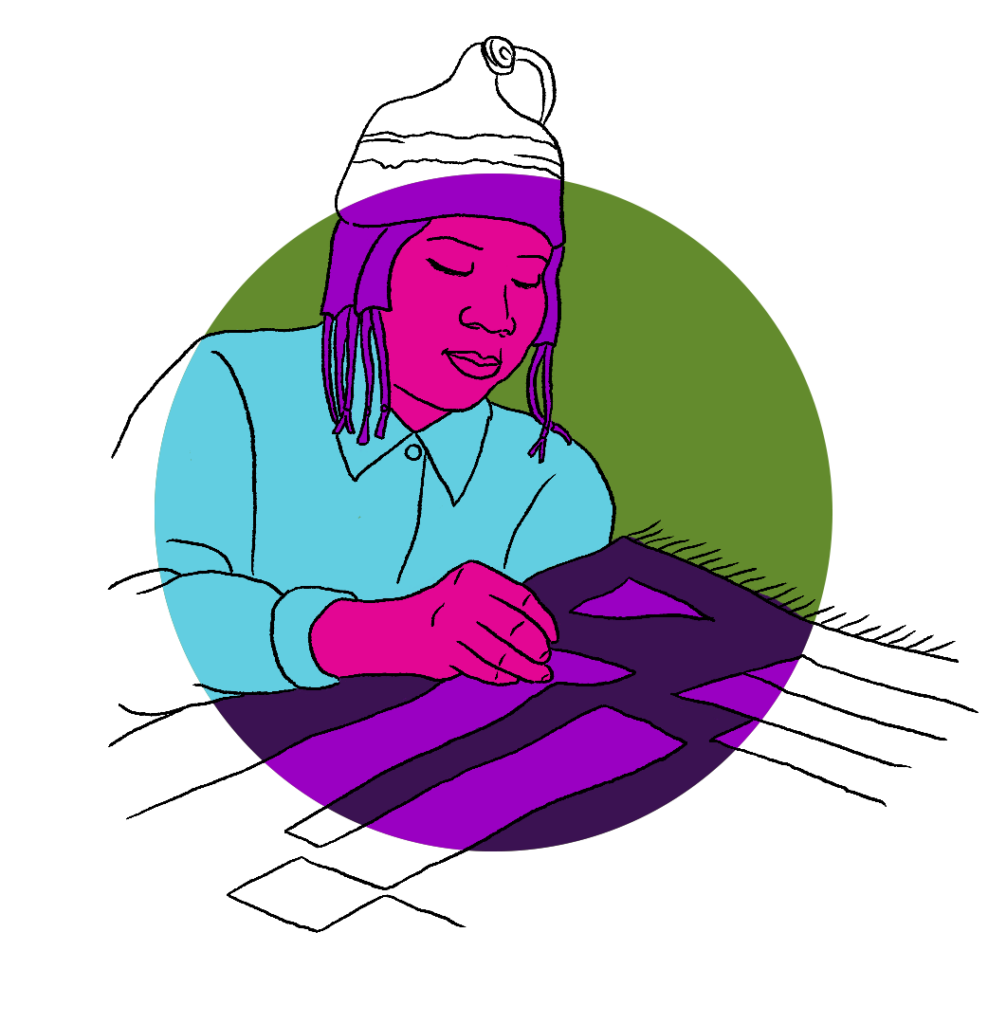Artists saved the life of an impact investor and set him on a path to leveraging technology to support the creative economy.
When I fell gravely ill on a trek 25 years ago, Tibetan artists who had resettled in the Kathmandu Valley brought me oranges and medicine until I was strong enough to return home. Inspired by the success of entrepreneur and designer Stephanie Odegard, who revolutionised the world of hand-knotted carpets, I began working with these same artists to bring their handicrafts to the United States. They had started their businesses with microfinance loans and I was witness to the transformative power of innovative financial solutions for the underserved.
As their artistic expression blossomed, microfinance grew as a field, and I returned to graduate school to study how it might scale. Under the leadership of Professor CK Prahalad, we published our findings in The Fortune at the Bottom of the Pyramid. Then the United Nations declared 2005 the Year of Microcredit. Dr Muhammad Yunus and the Grameen Bank won the Nobel Peace Prize the following year and microfinance entered the financial mainstream.
Since that time, my partners and I have designed and managed institutional impact investment strategies that connect capital with creditworthy but underserved borrowers. Our firm, Community Investment Management (CIM), provides strategic private credit financing to scale and demonstrate responsible innovation in lending. Since 2014, we have partnered with 20 innovative lenders to provide over US$1.5 billion in debt financing to 70,000 small businesses and individual borrowers. Scale matters here, in part because the potential to do good is so great (annual capital shortages for micro, small and medium enterprises measure in the trillions). The digitisation of society and commerce has meant that innovation in lending has been virtualised. Financial technology (fintech) startups across global markets are serving small- and medium-sized enterprises (SMEs), low and middle-income households and underserved students.
The last year has validated our thesis that fintech lenders can act faster than banks and traditional lenders to reach underserved borrowers at scale
During the Covid-19 pandemic, we have seen the acceleration of many of the digital finance themes in which CIM has been investing since our founding. The last year has validated our thesis that fintech lenders can act faster than banks and traditional lenders to reach underserved borrowers at scale, due to their ability to move quickly and continue activities despite disruptions to physical business operations. Social distancing and shelter-in-place orders have moved more transactions online, enriching data sources for digital underwriting and offering a larger volume of new types of collateral, such as digital payment settlements. In response, fintech lenders are shifting to new and more sophisticated business models, moving away from competing on interest rates for a one-time customer to higher engagement, multi-product platforms. More lenders are focused on long-term borrower relationships and embedded products with multiple revenue streams. A wave of increased connectivity (application programming interfaces (APIs) to payroll and accounting, for example) and contextualised data sources have helped accelerate these advancements.
For creative economy entrepreneurs, digital financial services hold the key to unlocking their ability to build their businesses, create jobs, infuse communities with economic vitality and build wealth. Our partner CircleUp, for example, has developed a responsible invoice finance product that aligns with a business’s trajectory and provides the crucial working capital that creative businesses need to grow. Imagine what that means for a growing artisanal producer with orders to fill.
In measuring our impact, we find that the creative industries play a major role in our portfolios, a particular point of pride for me, considering how I got my start. From art galleries and salons to food artisans and software developers, 24% of our US small business lending portfolio is dedicated to the creative economy. Since 2014, we have deployed a quarter of a billion dollars to more than 1,100 creative economy businesses, according to the classification from Upstart Co-Lab. These loan proceeds have enabled 14,000 jobs and US$1.3 billion in small business revenue and have affected 36,000 lives in nearly 700 communities. As investors, it’s good business providing credit to these underserved enterprises. The creative economy is one of the fastest-growing sectors of the world economy – 9% annual growth, 12% in the developing world – and it is transformative for participants in terms of income generation, job creation and export earnings. It will represent around 10% of global GDP in the years to come, according to UNESCO.
As we contemplate a post-Covid world, we share UNCTAD’s optimism that the diverse voices in the creative economy will place us on a new trajectory – a convergence of social equity and environmental justice. As impact investors, we hope to accelerate this convergence with fintech business models that drive financial inclusion. And, as funders of the creative economy, we strive to place these economic guardrails at the service of human ingenuity.








